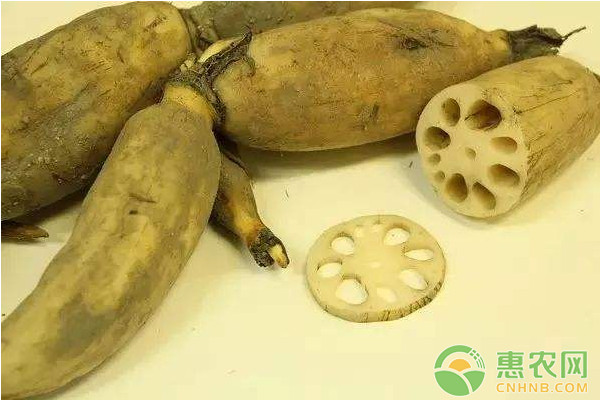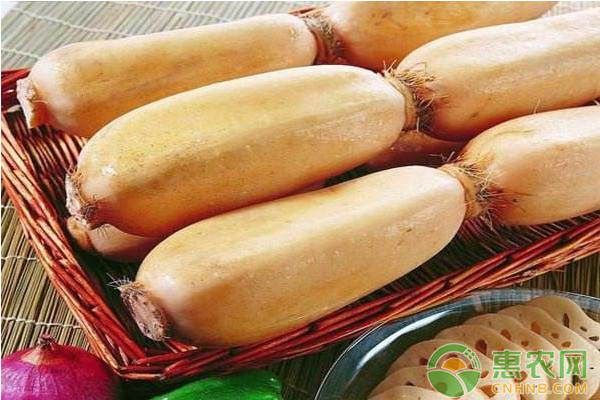How is lotus root planted? Today, Hui Nong Network Xiaobian takes everyone to learn about the planting techniques of organic lotus roots. The farmers who need it can watch it!

1 Choose high-yield varieties
Choose medium-early-maturing high-yield varieties with shallow mud, thick stems, strong wind resistance, high commodity rate, and good quality, such as white lotus root, Elian No. 4, and Olian No.5.
2 Fertilization
Lotus roots bogey, cultivation should choose deep, fertile soil, rich in organic matter, strong water retention capacity, convenient irrigation and drainage, light soil loam. When the soil is prepared, the base fertilizer is applied. Generally, the organic fertilizer is 5,000-6,000 kilograms, and the soil is fully cultivated to reach the mud, the Tianping, the high and the fat feet. At the same time, apply 50-80 kg of quicklime for soil disinfection.
3 planting
When the temperature is stable above 12 °C and the soil temperature is above 8 °C, plant it at an appropriate time. It is generally suitable to plant from late March to early April. Choose a fresh maternal or scorpion with more than two full maturity to make a seedling, and the whole body should be big, the buds should be strong, no injury, no pests.
It is planted in plum blossoms according to the line spacing of 1.5-1.8 m and the plant spacing of 1.0-1.2 m. It can also be adjusted according to the size of the seedlings and the number of buds. Generally, about 400 litters per acre are planted, and 250-300 kg are used.
When planting, according to the size of the seedlings, 1 lotus per hole, the head into the mud deep (into the mud 10-12 cm), the shovel into the mud (into the mud 5 cm), the four surrounding rows of buds all the way to the field, In order to prevent the lotus root from growing out of the field.
4 Putian Management
(1) Irrigation
The demand for water in different growth stages of lotus root is different, that is, shallow water promotes germination, deep water protects the leaves, and shallow water promotes knotting. Therefore, within 30 days of planting, a shallow water layer of 2-3 cm depth should be maintained to increase soil temperature and promote germination growth;
After entering the prosperous growth period, gradually deepen the water level to 15-20 cm; during the crusting period from July to September, keep the shallow water layer 7-8 cm deep to promote crusting.
During the whole growth period, it is necessary to prevent the water level from soaring, flooding the leaves, and strictly preventing the polluted water from flowing into the fields, resulting in reduced production and no harvest.
(2) top dressing
Generally top dressing twice, the first time in the emergence of 3-5 whole leaves, 1500-2000 kg of decomposed manure urine to promote the vigorous growth of plants; the second time after the emergence of leaves 7-10 days before, also It can be added with 100 kg of decomposed cake fertilizer or 150 kg of ash.
(3) Disease prevention
According to the plant protection policy based on prevention, reasonable rotation will control the occurrence of diseases. It is found that the root rot should be removed in time, and the roots of 100 billion live spores/gram of Bacillus subtilis wettable powder 800 times can be used in the early stage of the disease, and the leaves and petioles should be sprayed at the same time. For the prevention and treatment of brown spot disease, it can be sprayed with difenoconazole in the early stage of the disease.

(4) pest control
Aphids are common pests of lotus root. They can be sprayed with 30% to 50 kilograms of water with 30% to 50 kilograms of matrine soluble liquid per acre.
(5) Weeding
Manual extraction. Generally, before the buckwheat leaves are closed, the weeds are combined with the top dressing to remove the weeds into the mud, and the floating leaves, yellow leaves and dead leaves are removed.
5 timely mining
Lotus root has no obvious maturity. When the leaf back is slightly red, and the base leaf edge begins to be yellow, according to market conditions, it will be listed in time.
6 Common pests and diseases
(1) Lotus root brown spot disease
Brown spot disease is a common leaf disease of lotus root, which produces light brown lesions on the leaves, which makes the diseased leaves partially dry.
Control method:
Reasonable close planting to ensure ventilation and light transmission in Putian; appropriate application of phosphorus, potassium, micro-package fertilizer to improve disease resistance of plants; timely removal of diseased plant residues to prevent the spread of disease. In the early stage of the disease, spray with 50% carbendazim 600 times solution or 75% chlorothalonil 1000 times solution.
(2) lotus root black spot
Black spot disease is also called brown streak disease, which only occurs on the leaves. In severe cases, the lesions meet and the leaves are yellow.
Control method:
In the winter, the leaves of the diseased plants in the field are removed and burned intensively. In the early stage of the disease, the diseased leaves are removed in time, and 70% methyl thiophanate 1000 times solution, 65% sensitized zinc 600 times solution or 1:1:160-200 Bordeaux liquid spray is used for prevention and treatment. Generally, it is sprayed once every 10-5 days, even Spray 2-3 times.
(3) Lotus root disease
The disease of corruption is also called blight, which is mainly caused by underground stems. When the disease is serious, the whole field is burnt.
Control method:
(1) Agricultural control:
Reasonable rotation is the most effective method to prevent and treat this disease. The rotation cycle is generally 2-3 years. Pay attention to the selection of healthy plants from the disease-free fields to prevent the spread of bacteria. Reasonable application of package fertilizer, not biased with nitrogen fertilizer, enhance plant disease resistance.
(2) Chemical control:
Before planting, spray with 70% methyl thiophanate 1000 times solution or 75% chlorothalonil 800 times solution, cover the agricultural film for 24 hours, dry and plant. In the early stage of the disease, use 75% chlorothalonil 0.5 kg, add 30 kg of soil and mix well, then sprinkle it into shallow paddy field, or use 50% carbendazim WP 600-800 times solution, 50% thiophanate WP 800- 1000 times liquid, spray once every 7-10 days, even spray 2-3 times.
The technical points of planting organic lotus roots are so much today, and more vegetable planting techniques are available to you!
effervescent tablets,vitamin c effervescent tablets,Dietary Supplement ,Nutritional Supplements
FOSHAN PHARMA CO., LTD. , https://www.fs-pharma.com
